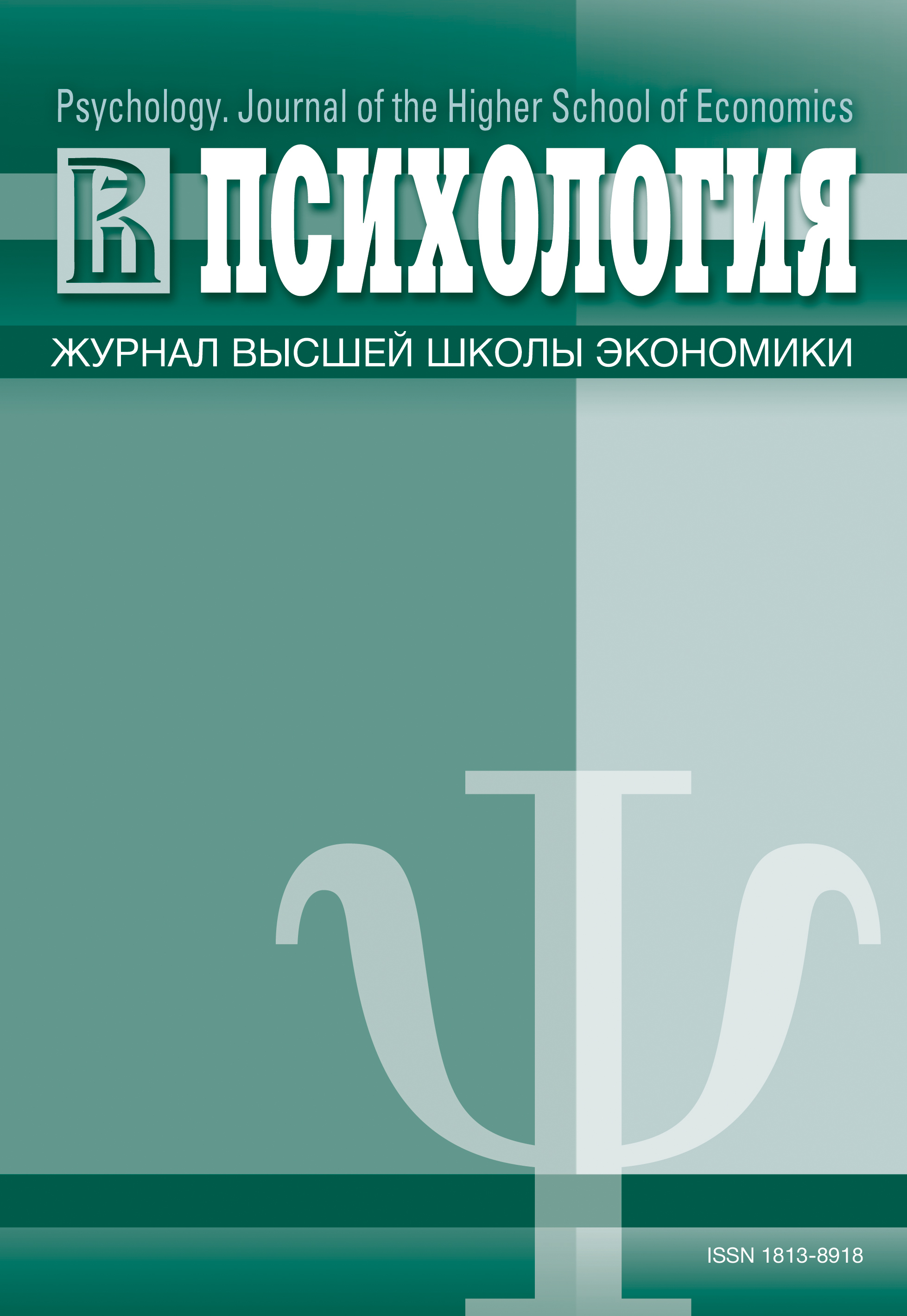Enhancing the Effect of Categorical Perception by Means of Conceptual Combinations (in Russian)
Keywords:
memory, effect of categorical perception, conceptual combinations, category learning, language
Abstract
Objects that fall into one category seem more similar than objects, which differ in their physical parameters to the same extent, but don’t fall into one category. Recent research showed that this categorical perception effect significantly strengthens with giving objects a common name (Kotov et al., 2012; Lupyan, 2008). In the present experiment we intensified categorical perception effect by means of conceptual combinations – definitions, additional to the main name of the category. We compared the manifestation of categorical perception effect in the context of typical combinations (‘Chinese vase’), atypical (‘tasty vase’) and in the context without conceptual combinations (simply ‘vase’). In the beginning the subjects were giving objects, shown to them, categories with or without different types of conceptual combinations, and then memorized additional visual information about objects, which included categorical, i.e. frequent, and individual, i.e. rare qualities. As a result of the study we found out that in all contexts, both with conceptual combinations and without them, the subjects successfully formed prototype of category and recognized old examples of categories. Along with that, only under the conditions of usage of conceptual combinations (both typical and atypical) in relation to objects with reduced quantity of categorical information the subjects demonstrated categorical perception effect, i.e. considered these objects as seen before. Moreover, only with the usage of typical conceptual combinations, as distinct from the usage of atypical ones, the subjects successfully recognized objects with new qualities. We discuss the discovered differences as a manifestation of two functions of conceptual combinations in categorical effect of perception: drawing of attention to the category’s core and underlining category’s differences from other categories. Given results are compared with semantic models of conceptual combinations (Hampton, 1987; Springer, Murphy, 1992).Downloads
Download data is not yet available.
Published
2016-07-14
How to Cite
КотовА. А., БеляеваВ. А., & КотоваТ. Н. (2016). Enhancing the Effect of Categorical Perception by Means of Conceptual Combinations (in Russian). Psychology. Journal of the Higher School of Economics, 13(2), 347-366. https://doi.org/10.17323/1813-8918-2016-2-347-366
Issue
Section
Articles section





